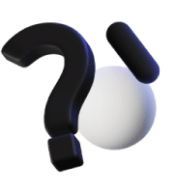Is my software a medical device?
Software does not need to be embedded in physical hardware to be classified as a medical device; standalone software can also meet this definition. Such software is referred to as Software as a Medical Device (SaMD) and is subject to the same regulatory requirements as physical medical devices (MHRA, 2021). When SaMD operates independently and is classified as a medical device, it is termed an active medical device (EU MDR 2017/745).
Determine if your software is a medical device
Determining whether your software qualifies as a medical device is crucial (MHRA, 2022). For instance, if – at least – your software:
- Is not incorporated into another device,
- Is a computer program or functional document,
- Has a medical purpose,
- And does not qualify as an In Vitro Diagnostic (IVD),
then it is considered a medical device (MHRA, 2022).
Alternatively, if the software is not itself a medical device but works in conjunction with one or more medical devices—enabling or augmenting their function—then it is classified as a medical device accessory (MHRA, 2021). Accessories must follow the same regulatory processes as the primary devices (EU MDR 2017/745).
If the software is neither a medical device nor a medical device accessory, it does not legally need to comply with medical device regulations (MHRA, 2022).

Examples of Functions That May Classify Software as a Medical Device
- Treatment Support: Software that enables treatment or directly provides treatment for a specific disease or injury (MHRA, 2021). For example, an app that calculates insulin dosages for people with diabetes.
- Diagnosis or Prevention: Software that interprets patient data to diagnose a disease or prevent its progression (EU MDR 2017/745). For example, an algorithm that detects cardiac arrhythmias from ECG data.
Functions That Typically Do Not Qualify as a Medical Device
- Patient or Professional Education: Simple tools or e-learning modules without a direct therapeutic or diagnostic role.
- Wellbeing or Fitness Monitoring: Apps that track general wellness metrics (e.g., step counters, calorie logs).
- Data Storage or Transfer: These are Systems that merely store or transmit medical data without analysis.
- Appointment Scheduling or Hosting: Basic administrative tools that do not directly affect patient care decisions.
- Prescription Requests: Platforms for ordering or renewing prescriptions without clinical decision-making functions.
- Reference Information for Healthcare Professionals: Databases of clinical guidelines that do not generate patient-specific recommendations (MHRA, 2022).
Ensure your healthcare software complies with UK medical device regulations. Learn how to classify Software as a Medical Device (SaMD), understand regulatory pathways, and distinguish between medical devices and accessories. Includes real-world examples and guidance for developers and healthcare providers.
References
- Medicines and Healthcare products Regulatory Agency. (n.d.). Medical devices: software applications (apps). GOV.UK. Retrieved March 31, 2025, from https://www.gov.uk/government/publications/medical-devices-software-applications-apps
- Medicines and Healthcare products Regulatory Agency. (n.d.). Software and artificial intelligence (AI) as a medical device. GOV.UK. Retrieved March 31, 2025, from https://www.gov.uk/government/publications/software-and-artificial-intelligence-ai-as-a-medical-device/software-and-artificial-intelligence-ai-as-a-medical-device
- European Parliament and Council of the European Union. (2017). Regulation (EU) 2017/745 on medical devices. Official Journal of the European Union, L 117, 1–175. Retrieved from https://eur-lex.europa.eu/legal-content/EN/TXT/PDF/?uri=CELEX%3A32017R0745
- Medicines and Healthcare products Regulatory Agency. (2023). Guidance: Medical device stand-alone software including apps (including IVDMDs). GOV.UK. Retrieved March 31, 2025, from https://assets.publishing.service.gov.uk/media/64a7d22d7a4c230013bba33c/Medical_device_stand-alone_software_including_apps__including_IVDMDs_.pdf
- European Commission. (2017). Regulation (EU) 2017/745 of the European Parliament and of the Council of 5 April 2017 on medical devices. Publications Office of the European Union. Retrieved from https://op.europa.eu/en/publication-detail/-/publication/83bdc18f-315d-11e7-9412-01aa75ed71a1/language-en
- European Commission. (2017). Regulation (EU) 2017/745 on medical devices. EUR-Lex. Retrieved from https://eur-lex.europa.eu/eli/reg/2017/745/oj/eng
- European Commission. (2017). Regulation (EU) 2017/745 of the European Parliament and of the Council. Legislation.gov.uk. Retrieved from https://www.legislation.gov.uk/id/eur/2017/745
- European Commission. (2017). Regulation (EU) 2017/745 on medical devices. EUR-Lex. Retrieved from https://eur-lex.europa.eu/eli/reg/2017/745/oj/eng
- European Commission. (2017). Regulation (EU) 2017/745. EUR-Lex. Retrieved from https://eur-lex.europa.eu/legal-content/EN/TXT/PDF/?uri=CELEX%3A32017R0745
- European Commission. (2017). Regulation (EU) 2017/745 on medical devices. EUR-Lex. Retrieved from https://eur-lex.europa.eu/eli/reg/2017/745/oj/eng





